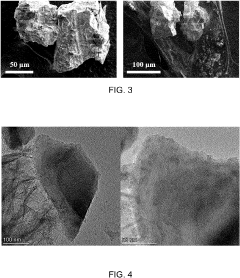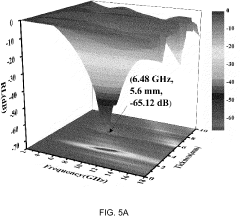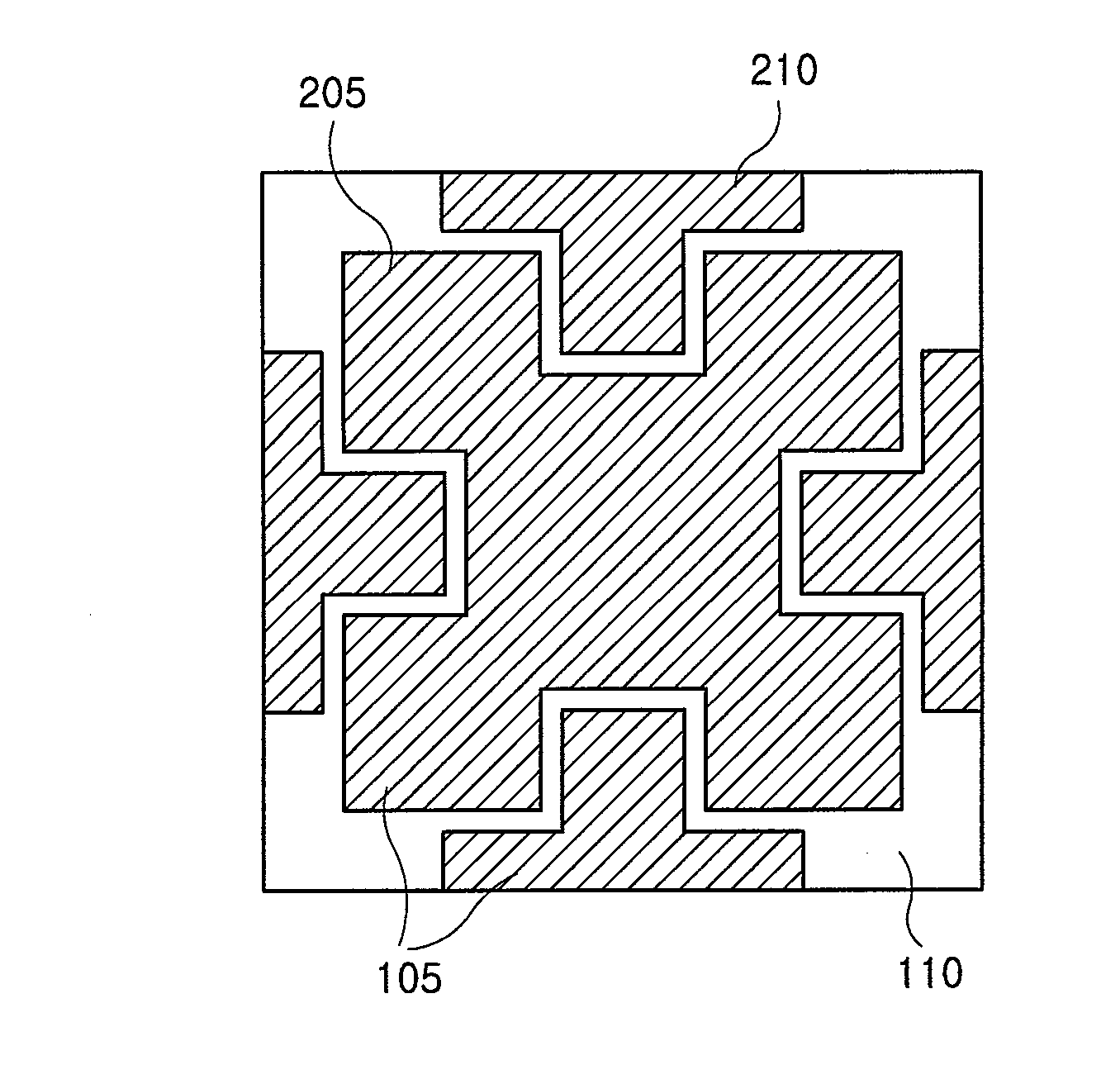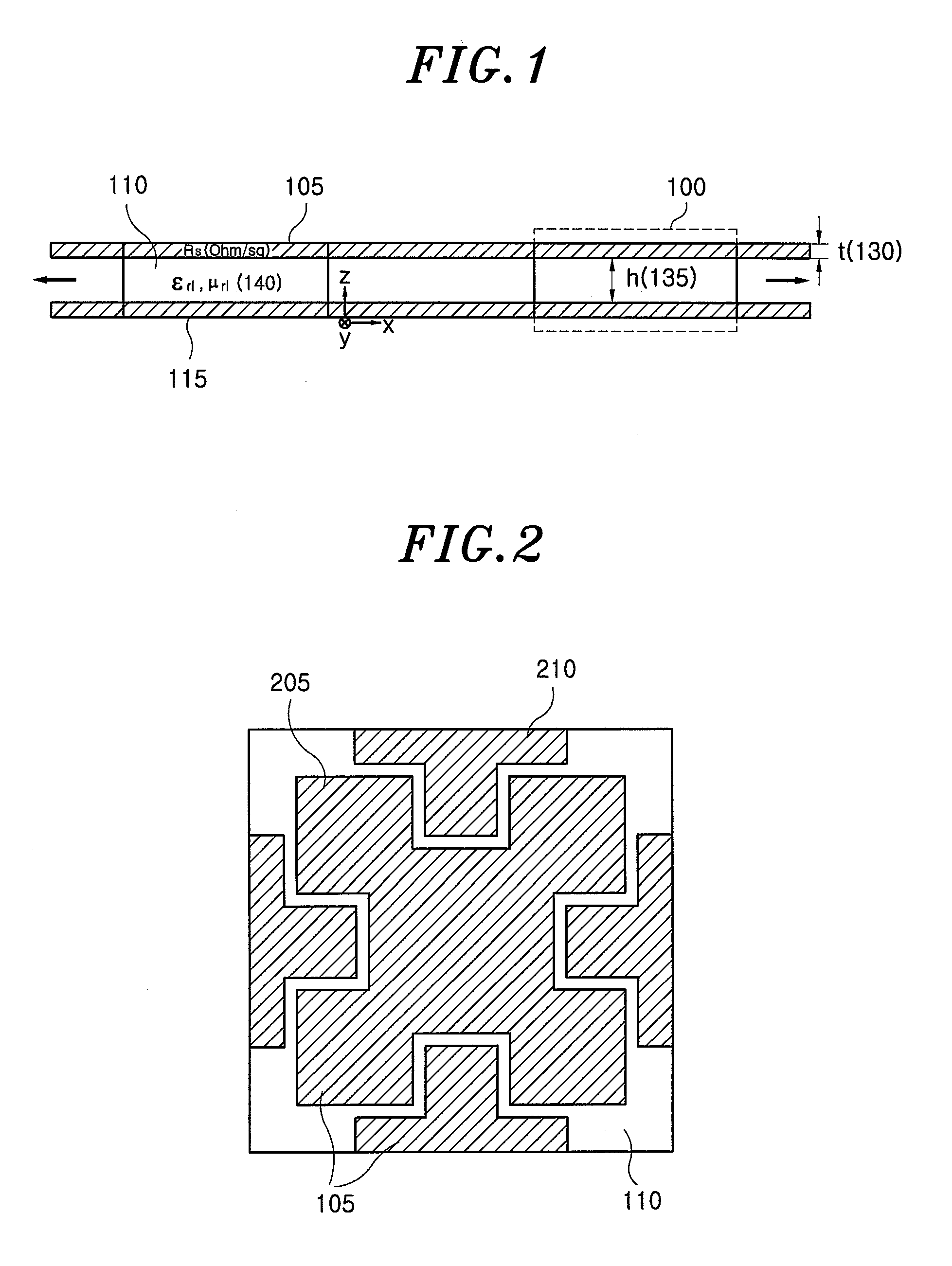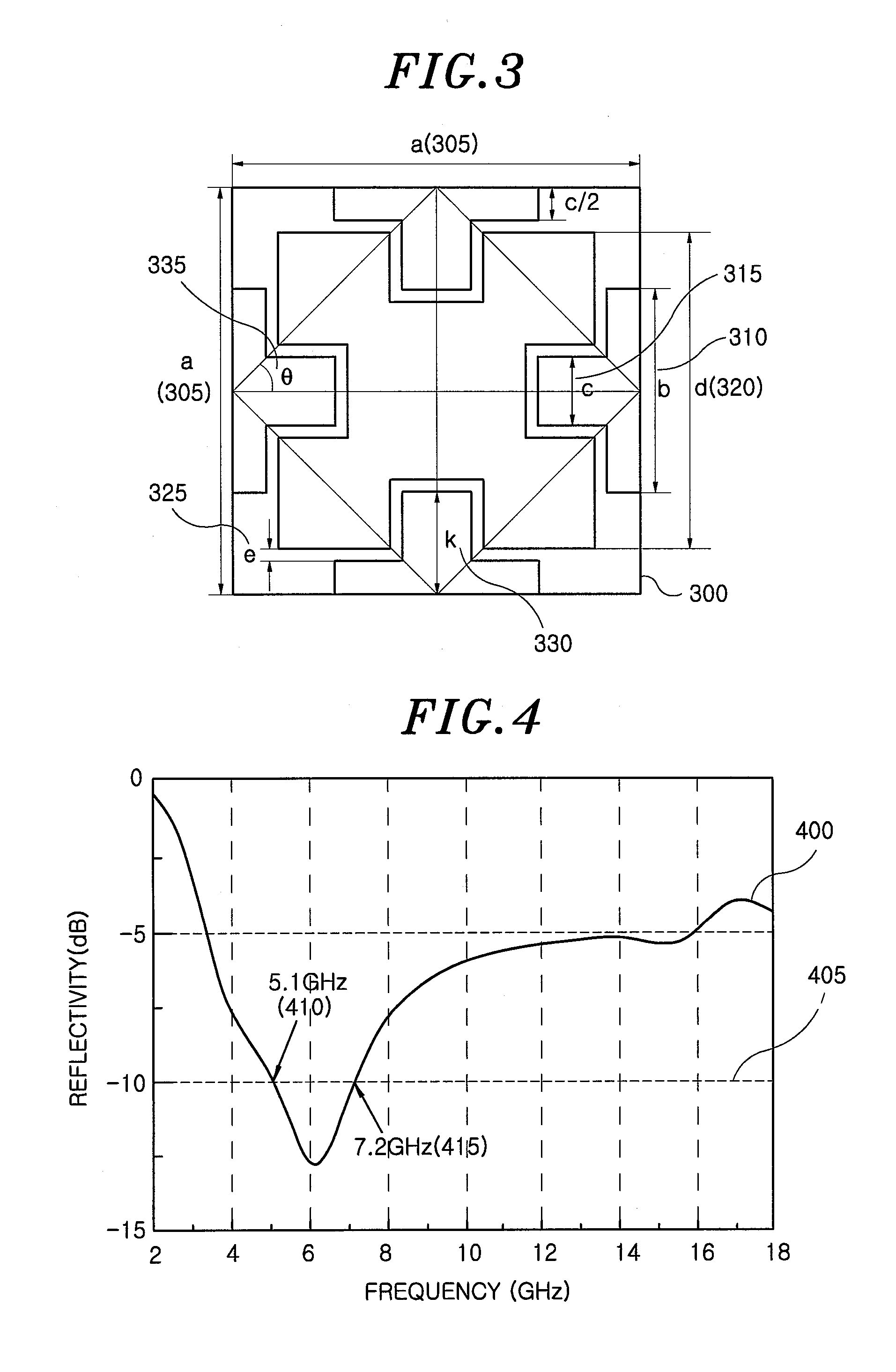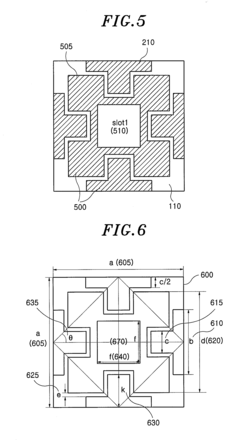Assessing Electromagnetic Wave Impact on Health and Safety
JUL 11, 20259 MIN READ
Generate Your Research Report Instantly with AI Agent
Patsnap Eureka helps you evaluate technical feasibility & market potential.
EMW Health Impact Background
Electromagnetic waves (EMW) have become an integral part of modern life, permeating our environment through various sources such as mobile phones, Wi-Fi networks, and other wireless technologies. As these technologies continue to advance and proliferate, concerns about their potential impact on human health and safety have grown, prompting extensive research and debate within the scientific community.
The study of electromagnetic wave impact on health and safety has its roots in the early 20th century, with initial investigations focusing on the effects of radio waves and radar systems. However, the rapid expansion of wireless communication technologies in recent decades has significantly intensified research efforts in this field. The widespread adoption of mobile phones, in particular, has been a driving force behind numerous studies examining the potential health risks associated with prolonged exposure to radiofrequency electromagnetic fields.
The World Health Organization (WHO) has played a crucial role in coordinating international research efforts and synthesizing available evidence on EMW health effects. In 2011, the International Agency for Research on Cancer (IARC), a part of WHO, classified radiofrequency electromagnetic fields as "possibly carcinogenic to humans" based on limited evidence from human and animal studies. This classification has since fueled further research and public discourse on the topic.
Key areas of investigation in EMW health impact studies include potential links to cancer, particularly brain tumors, as well as effects on cognitive function, sleep patterns, and reproductive health. Additionally, researchers have explored the concept of electromagnetic hypersensitivity, a reported condition where individuals experience various symptoms attributed to EMW exposure, although scientific consensus on its existence remains elusive.
The technological landscape continues to evolve, with the rollout of 5G networks introducing new frequencies and transmission methods. This has sparked fresh debates and research initiatives to assess the potential health implications of these advanced systems. Regulatory bodies worldwide have established exposure guidelines and safety standards based on current scientific understanding, aiming to protect public health while enabling technological progress.
As the field of EMW health impact research progresses, it faces several challenges, including the need for long-term studies to assess chronic exposure effects, difficulties in accurately measuring individual exposure levels in real-world settings, and the complex task of isolating EMW effects from other environmental factors. These challenges underscore the importance of ongoing, rigorous scientific investigation to inform public policy and health guidelines in an increasingly wireless world.
The study of electromagnetic wave impact on health and safety has its roots in the early 20th century, with initial investigations focusing on the effects of radio waves and radar systems. However, the rapid expansion of wireless communication technologies in recent decades has significantly intensified research efforts in this field. The widespread adoption of mobile phones, in particular, has been a driving force behind numerous studies examining the potential health risks associated with prolonged exposure to radiofrequency electromagnetic fields.
The World Health Organization (WHO) has played a crucial role in coordinating international research efforts and synthesizing available evidence on EMW health effects. In 2011, the International Agency for Research on Cancer (IARC), a part of WHO, classified radiofrequency electromagnetic fields as "possibly carcinogenic to humans" based on limited evidence from human and animal studies. This classification has since fueled further research and public discourse on the topic.
Key areas of investigation in EMW health impact studies include potential links to cancer, particularly brain tumors, as well as effects on cognitive function, sleep patterns, and reproductive health. Additionally, researchers have explored the concept of electromagnetic hypersensitivity, a reported condition where individuals experience various symptoms attributed to EMW exposure, although scientific consensus on its existence remains elusive.
The technological landscape continues to evolve, with the rollout of 5G networks introducing new frequencies and transmission methods. This has sparked fresh debates and research initiatives to assess the potential health implications of these advanced systems. Regulatory bodies worldwide have established exposure guidelines and safety standards based on current scientific understanding, aiming to protect public health while enabling technological progress.
As the field of EMW health impact research progresses, it faces several challenges, including the need for long-term studies to assess chronic exposure effects, difficulties in accurately measuring individual exposure levels in real-world settings, and the complex task of isolating EMW effects from other environmental factors. These challenges underscore the importance of ongoing, rigorous scientific investigation to inform public policy and health guidelines in an increasingly wireless world.
Market Demand Analysis
The market demand for assessing electromagnetic wave impact on health and safety has been steadily increasing in recent years, driven by the rapid proliferation of wireless technologies and growing public awareness of potential health risks. This demand spans across various sectors, including telecommunications, healthcare, consumer electronics, and occupational safety.
In the telecommunications industry, the rollout of 5G networks has intensified the need for comprehensive electromagnetic wave impact assessments. Network operators and equipment manufacturers are seeking advanced tools and methodologies to evaluate and mitigate potential health risks associated with higher frequency bands and increased network density. This has created a significant market for specialized testing equipment, simulation software, and consulting services.
The consumer electronics sector has also witnessed a surge in demand for electromagnetic wave impact assessments. With the increasing adoption of smartphones, wearables, and smart home devices, manufacturers are under pressure to demonstrate the safety of their products. This has led to a growing market for electromagnetic compatibility (EMC) testing services and equipment, as well as for shielding materials and technologies designed to reduce electromagnetic radiation exposure.
In the healthcare industry, there is a rising demand for electromagnetic wave impact assessments in medical imaging and therapeutic applications. Hospitals and medical device manufacturers require sophisticated tools to evaluate the safety of MRI machines, radiation therapy equipment, and other electromagnetic-based medical technologies. This has created opportunities for companies specializing in medical-grade electromagnetic field measurement and analysis.
The occupational safety sector has seen increased attention to electromagnetic wave exposure in workplace environments. Industries such as power generation, manufacturing, and telecommunications are investing in assessment tools and protective measures to ensure worker safety. This has led to a growing market for personal electromagnetic field monitors, shielding equipment, and workplace safety consulting services.
Government regulations and standards related to electromagnetic wave exposure have also been driving market demand. As regulatory bodies worldwide update their guidelines and enforcement practices, industries are compelled to invest in compliance measures. This has created a robust market for compliance testing services, certification programs, and regulatory consulting.
The research and education sectors have also contributed to market growth, with increased funding for studies on long-term health effects of electromagnetic wave exposure. This has stimulated demand for advanced measurement equipment, data analysis tools, and research collaboration platforms.
Overall, the market for assessing electromagnetic wave impact on health and safety is expected to continue its growth trajectory. As technology evolves and public concern persists, there will be ongoing opportunities for innovation in assessment methodologies, protective technologies, and regulatory compliance solutions.
In the telecommunications industry, the rollout of 5G networks has intensified the need for comprehensive electromagnetic wave impact assessments. Network operators and equipment manufacturers are seeking advanced tools and methodologies to evaluate and mitigate potential health risks associated with higher frequency bands and increased network density. This has created a significant market for specialized testing equipment, simulation software, and consulting services.
The consumer electronics sector has also witnessed a surge in demand for electromagnetic wave impact assessments. With the increasing adoption of smartphones, wearables, and smart home devices, manufacturers are under pressure to demonstrate the safety of their products. This has led to a growing market for electromagnetic compatibility (EMC) testing services and equipment, as well as for shielding materials and technologies designed to reduce electromagnetic radiation exposure.
In the healthcare industry, there is a rising demand for electromagnetic wave impact assessments in medical imaging and therapeutic applications. Hospitals and medical device manufacturers require sophisticated tools to evaluate the safety of MRI machines, radiation therapy equipment, and other electromagnetic-based medical technologies. This has created opportunities for companies specializing in medical-grade electromagnetic field measurement and analysis.
The occupational safety sector has seen increased attention to electromagnetic wave exposure in workplace environments. Industries such as power generation, manufacturing, and telecommunications are investing in assessment tools and protective measures to ensure worker safety. This has led to a growing market for personal electromagnetic field monitors, shielding equipment, and workplace safety consulting services.
Government regulations and standards related to electromagnetic wave exposure have also been driving market demand. As regulatory bodies worldwide update their guidelines and enforcement practices, industries are compelled to invest in compliance measures. This has created a robust market for compliance testing services, certification programs, and regulatory consulting.
The research and education sectors have also contributed to market growth, with increased funding for studies on long-term health effects of electromagnetic wave exposure. This has stimulated demand for advanced measurement equipment, data analysis tools, and research collaboration platforms.
Overall, the market for assessing electromagnetic wave impact on health and safety is expected to continue its growth trajectory. As technology evolves and public concern persists, there will be ongoing opportunities for innovation in assessment methodologies, protective technologies, and regulatory compliance solutions.
Current EMW Safety Challenges
The assessment of electromagnetic wave (EMW) impact on health and safety presents several significant challenges in today's technological landscape. One of the primary concerns is the ubiquitous nature of EMW sources in modern society, ranging from mobile phones and Wi-Fi networks to power lines and industrial equipment. This widespread exposure makes it difficult to isolate and study the specific effects of EMW on human health.
A major challenge lies in the long-term effects of EMW exposure. While acute effects of high-intensity EMW are well-documented, the potential chronic impacts of low-level, long-term exposure remain uncertain. This uncertainty is compounded by the relatively recent widespread adoption of many EMW-emitting technologies, limiting the available longitudinal data.
The variability in individual susceptibility to EMW effects poses another significant challenge. Factors such as age, genetic predisposition, and pre-existing health conditions may influence how individuals respond to EMW exposure, making it difficult to establish universal safety standards.
The rapid evolution of technology introduces new EMW sources and exposure patterns faster than research can keep pace. For instance, the rollout of 5G networks has raised new questions about the potential health impacts of higher frequency EMW, requiring ongoing assessment and adaptation of safety guidelines.
Measuring and quantifying EMW exposure in real-world settings presents technical challenges. Environmental factors, multiple overlapping sources, and variations in usage patterns make it difficult to accurately assess an individual's total EMW exposure over time.
There is also a challenge in distinguishing between thermal and non-thermal effects of EMW. While thermal effects are well-understood and form the basis for current safety standards, potential non-thermal biological effects at lower intensities remain a subject of debate and ongoing research.
The interdisciplinary nature of EMW health research presents its own challenges. Effective assessment requires collaboration between physicists, engineers, biologists, epidemiologists, and medical professionals, necessitating a complex, multifaceted approach to research and interpretation of results.
Lastly, there is a significant challenge in communicating EMW safety information to the public. Balancing the need for precautionary measures with avoiding undue alarm requires careful, evidence-based communication strategies. Misinformation and public perception issues can complicate efforts to implement evidence-based safety measures and guidelines.
A major challenge lies in the long-term effects of EMW exposure. While acute effects of high-intensity EMW are well-documented, the potential chronic impacts of low-level, long-term exposure remain uncertain. This uncertainty is compounded by the relatively recent widespread adoption of many EMW-emitting technologies, limiting the available longitudinal data.
The variability in individual susceptibility to EMW effects poses another significant challenge. Factors such as age, genetic predisposition, and pre-existing health conditions may influence how individuals respond to EMW exposure, making it difficult to establish universal safety standards.
The rapid evolution of technology introduces new EMW sources and exposure patterns faster than research can keep pace. For instance, the rollout of 5G networks has raised new questions about the potential health impacts of higher frequency EMW, requiring ongoing assessment and adaptation of safety guidelines.
Measuring and quantifying EMW exposure in real-world settings presents technical challenges. Environmental factors, multiple overlapping sources, and variations in usage patterns make it difficult to accurately assess an individual's total EMW exposure over time.
There is also a challenge in distinguishing between thermal and non-thermal effects of EMW. While thermal effects are well-understood and form the basis for current safety standards, potential non-thermal biological effects at lower intensities remain a subject of debate and ongoing research.
The interdisciplinary nature of EMW health research presents its own challenges. Effective assessment requires collaboration between physicists, engineers, biologists, epidemiologists, and medical professionals, necessitating a complex, multifaceted approach to research and interpretation of results.
Lastly, there is a significant challenge in communicating EMW safety information to the public. Balancing the need for precautionary measures with avoiding undue alarm requires careful, evidence-based communication strategies. Misinformation and public perception issues can complicate efforts to implement evidence-based safety measures and guidelines.
Existing EMW Safety Solutions
01 Shielding materials for electromagnetic waves
Various materials and compositions are developed to shield against electromagnetic waves, protecting human health and ensuring safety. These materials can be incorporated into fabrics, coatings, or structures to reduce exposure to potentially harmful electromagnetic radiation.- Shielding materials for electromagnetic waves: Various materials and compositions are developed to shield against electromagnetic waves, protecting human health and ensuring safety. These materials can be incorporated into fabrics, coatings, or structures to reduce exposure to potentially harmful electromagnetic radiation.
- Electromagnetic wave detection and measurement: Advanced systems and methods are designed to detect and measure electromagnetic waves in various environments. These technologies help in assessing potential health risks and ensuring safety standards are met by accurately monitoring electromagnetic radiation levels.
- Health effects assessment of electromagnetic exposure: Research and studies are conducted to evaluate the potential health effects of electromagnetic wave exposure. This includes developing methodologies for assessing long-term impacts and establishing safety guidelines for various electromagnetic frequencies and intensities.
- Electromagnetic compatibility in electronic devices: Techniques and designs are implemented to ensure electromagnetic compatibility in electronic devices, reducing potential interference and minimizing health and safety risks associated with electromagnetic emissions from consumer and industrial electronics.
- Protective equipment and personal safety measures: Development of protective equipment and personal safety measures to mitigate the effects of electromagnetic waves on human health. This includes specialized clothing, accessories, and devices designed to reduce exposure to electromagnetic radiation in various settings.
02 Electromagnetic wave detection and measurement
Devices and methods for detecting and measuring electromagnetic waves are crucial for assessing potential health risks and ensuring safety standards are met. These technologies enable monitoring of electromagnetic field strengths in various environments and help in implementing appropriate protective measures.Expand Specific Solutions03 Health effects of electromagnetic radiation
Research and studies focus on understanding the potential health effects of electromagnetic radiation on human bodies. This includes investigating both short-term and long-term impacts, as well as developing guidelines for safe exposure limits to minimize health risks associated with electromagnetic waves.Expand Specific Solutions04 Electromagnetic compatibility in electronic devices
Techniques and designs are implemented to ensure electromagnetic compatibility in electronic devices, reducing interference and potential health risks. This involves developing circuits, components, and systems that minimize electromagnetic emissions while maintaining device functionality and safety.Expand Specific Solutions05 Protective equipment and clothing
Specialized protective equipment and clothing are designed to shield individuals from electromagnetic waves in various settings. These may include protective suits, helmets, or accessories that incorporate shielding materials to reduce exposure to electromagnetic radiation in occupational or everyday environments.Expand Specific Solutions
Key EMW Research Players
The assessment of electromagnetic wave impact on health and safety is a complex field in a mature stage of development, with ongoing research and regulatory efforts worldwide. The market size is substantial, driven by increasing concerns over electromagnetic radiation from various sources. Key players in this arena include research institutions like Electronics & Telecommunications Research Institute (ETRI) and Korea Aerospace Research Institute, as well as major technology companies such as Hitachi Ltd., Fujitsu Ltd., and Huawei Technologies Co., Ltd. These organizations are actively involved in developing technologies to measure, mitigate, and understand the effects of electromagnetic waves. The technological maturity varies, with some aspects well-established and others still evolving, particularly in relation to emerging technologies like 5G networks and IoT devices.
Electronics & Telecommunications Research Institute
Technical Solution: ETRI has developed advanced electromagnetic field measurement and analysis techniques to assess the impact of electromagnetic waves on human health and safety. Their approach combines high-precision sensors with sophisticated data processing algorithms to accurately measure and characterize electromagnetic fields in various environments. ETRI's system can detect and analyze both low-frequency and high-frequency electromagnetic radiation, including 5G and upcoming 6G technologies. The institute has also created simulation models to predict electromagnetic wave propagation and interaction with biological tissues, allowing for comprehensive risk assessment[1][3]. Additionally, ETRI has developed wearable devices that can monitor personal electromagnetic exposure in real-time, providing valuable data for long-term health studies[5].
Strengths: Cutting-edge measurement technology, comprehensive analysis capabilities, and integration of wearable monitoring devices. Weaknesses: Potential limitations in assessing long-term health effects due to the complexity of biological systems and the need for extended longitudinal studies.
Hitachi Ltd.
Technical Solution: Hitachi has developed a multi-faceted approach to assess electromagnetic wave impact on health and safety. Their system incorporates advanced electromagnetic field sensors with AI-driven data analysis to provide real-time monitoring and risk assessment. Hitachi's technology can map electromagnetic field distributions in complex environments, such as urban areas with multiple sources of electromagnetic radiation. The company has also created specialized shielding materials and designs to mitigate electromagnetic exposure in sensitive areas. Hitachi's research extends to the biological effects of electromagnetic waves, using in vitro and in vivo studies to investigate potential cellular and physiological impacts[2][4]. Their holistic approach includes the development of guidelines and safety protocols for various industries and public spaces to minimize potential health risks associated with electromagnetic exposure.
Strengths: Comprehensive approach combining hardware, software, and biological research; extensive industrial applications. Weaknesses: Potential challenges in adapting to rapidly evolving wireless technologies and their associated electromagnetic profiles.
Core EMW Health Studies
Preparation and application in wave absorption of titanium sulfide nanomaterial and composite material thereof
PatentActiveUS20230063025A1
Innovation
- A titanium sulfide nanomaterial with a laminated structure formed by stacking two-dimensional nano-sheets, and a manganese dioxide modified titanium sulfide composite nanomaterial, both with optimized morphologies and synthesis methods, are developed to improve wave absorption performance by enhancing electromagnetic wave refraction and scattering.
Electromagnetic wave absorber using resistive material
PatentInactiveUS20090284404A1
Innovation
- An electromagnetic wave absorber using an Electromagnetic BandGap (EBG) structure with periodically arranged unit cells, comprising a metal conductive ground layer, a dielectric layer, and a resistive unit cell pattern featuring fundamental and half cross dipole patches with varying surface resistance values, allowing for adjustable thickness and easy adjustment of absorbing frequency bands and characteristics.
EMW Regulatory Framework
The regulatory framework for electromagnetic waves (EMW) plays a crucial role in ensuring public health and safety. Globally, various organizations and governments have established guidelines and standards to manage EMW exposure. The International Commission on Non-Ionizing Radiation Protection (ICNIRP) is a leading body that provides scientific advice and guidance on the health and environmental effects of non-ionizing radiation.
ICNIRP's guidelines form the basis for many national and international standards. These guidelines set limits for EMW exposure based on extensive scientific research and are regularly updated to reflect new findings. The World Health Organization (WHO) also plays a significant role in shaping EMW regulations by conducting and coordinating research on potential health effects.
In the United States, the Federal Communications Commission (FCC) is responsible for regulating EMW emissions from electronic devices and telecommunications equipment. The FCC's guidelines are based on recommendations from the National Council on Radiation Protection and Measurements (NCRP) and the Institute of Electrical and Electronics Engineers (IEEE).
The European Union has implemented the EMF Directive (2013/35/EU), which sets minimum health and safety requirements regarding the exposure of workers to risks arising from electromagnetic fields. This directive is complemented by the Radio Equipment Directive (2014/53/EU), which ensures that radio equipment placed on the EU market meets essential requirements for health and safety.
Many countries have adopted their own EMW regulations, often based on international guidelines but tailored to local conditions and concerns. For example, China has implemented stricter EMW exposure limits than those recommended by ICNIRP, reflecting a more precautionary approach.
The regulatory framework also extends to specific industries and applications. For instance, the aviation sector has stringent EMW regulations to prevent interference with aircraft systems. Similarly, the medical industry has specific guidelines for EMW-emitting devices used in diagnosis and treatment.
As technology evolves, particularly with the rollout of 5G networks, regulatory frameworks are being reassessed and updated. This ongoing process involves balancing the benefits of new technologies with potential health risks, requiring continuous research and international cooperation.
ICNIRP's guidelines form the basis for many national and international standards. These guidelines set limits for EMW exposure based on extensive scientific research and are regularly updated to reflect new findings. The World Health Organization (WHO) also plays a significant role in shaping EMW regulations by conducting and coordinating research on potential health effects.
In the United States, the Federal Communications Commission (FCC) is responsible for regulating EMW emissions from electronic devices and telecommunications equipment. The FCC's guidelines are based on recommendations from the National Council on Radiation Protection and Measurements (NCRP) and the Institute of Electrical and Electronics Engineers (IEEE).
The European Union has implemented the EMF Directive (2013/35/EU), which sets minimum health and safety requirements regarding the exposure of workers to risks arising from electromagnetic fields. This directive is complemented by the Radio Equipment Directive (2014/53/EU), which ensures that radio equipment placed on the EU market meets essential requirements for health and safety.
Many countries have adopted their own EMW regulations, often based on international guidelines but tailored to local conditions and concerns. For example, China has implemented stricter EMW exposure limits than those recommended by ICNIRP, reflecting a more precautionary approach.
The regulatory framework also extends to specific industries and applications. For instance, the aviation sector has stringent EMW regulations to prevent interference with aircraft systems. Similarly, the medical industry has specific guidelines for EMW-emitting devices used in diagnosis and treatment.
As technology evolves, particularly with the rollout of 5G networks, regulatory frameworks are being reassessed and updated. This ongoing process involves balancing the benefits of new technologies with potential health risks, requiring continuous research and international cooperation.
Public Perception of EMW
Public perception of electromagnetic waves (EMW) plays a crucial role in shaping policies, regulations, and the adoption of new technologies. Over the years, the public's understanding and concerns regarding EMW have evolved, influenced by various factors such as media coverage, scientific studies, and personal experiences.
Generally, public perception of EMW can be categorized into three main groups: those who are highly concerned about potential health risks, those who are relatively indifferent, and those who actively support EMW-based technologies. The first group often expresses worries about the long-term effects of EMW exposure, particularly from sources like mobile phones, Wi-Fi routers, and cell towers. Their concerns typically revolve around potential links to cancer, electromagnetic hypersensitivity, and other health issues.
The second group, comprising a significant portion of the population, tends to be less worried about EMW impacts. They often view EMW as an integral part of modern life and may not actively seek information about potential risks. This group's perception is largely shaped by the ubiquity of EMW-emitting devices in daily life and the lack of immediate, observable health effects.
The third group, while smaller, consists of individuals who actively support and promote EMW-based technologies. They often emphasize the benefits of these technologies in areas such as communication, healthcare, and scientific research. This group tends to be more skeptical of claims regarding EMW health risks and may actively engage in debunking what they perceive as misinformation.
Media coverage plays a significant role in shaping public perception of EMW. Sensationalized reports of potential health risks can lead to increased public concern, while balanced reporting of scientific studies can help foster a more nuanced understanding. Social media and online forums have also become influential in spreading both information and misinformation about EMW, further complicating public perception.
The scientific community's communication of EMW research findings to the public is another critical factor. Clear, accessible explanations of complex studies can help alleviate unfounded fears and promote evidence-based understanding. However, conflicting results or uncertainties in research can sometimes lead to public confusion and skepticism.
Government agencies and international organizations also influence public perception through their guidelines and regulations on EMW exposure. Transparent communication of safety standards and ongoing monitoring efforts can help build public trust and mitigate concerns.
As EMW-based technologies continue to advance and become more prevalent, addressing public perception remains a crucial challenge. Effective risk communication, ongoing research, and public education initiatives will be essential in fostering a well-informed and balanced public understanding of EMW impacts on health and safety.
Generally, public perception of EMW can be categorized into three main groups: those who are highly concerned about potential health risks, those who are relatively indifferent, and those who actively support EMW-based technologies. The first group often expresses worries about the long-term effects of EMW exposure, particularly from sources like mobile phones, Wi-Fi routers, and cell towers. Their concerns typically revolve around potential links to cancer, electromagnetic hypersensitivity, and other health issues.
The second group, comprising a significant portion of the population, tends to be less worried about EMW impacts. They often view EMW as an integral part of modern life and may not actively seek information about potential risks. This group's perception is largely shaped by the ubiquity of EMW-emitting devices in daily life and the lack of immediate, observable health effects.
The third group, while smaller, consists of individuals who actively support and promote EMW-based technologies. They often emphasize the benefits of these technologies in areas such as communication, healthcare, and scientific research. This group tends to be more skeptical of claims regarding EMW health risks and may actively engage in debunking what they perceive as misinformation.
Media coverage plays a significant role in shaping public perception of EMW. Sensationalized reports of potential health risks can lead to increased public concern, while balanced reporting of scientific studies can help foster a more nuanced understanding. Social media and online forums have also become influential in spreading both information and misinformation about EMW, further complicating public perception.
The scientific community's communication of EMW research findings to the public is another critical factor. Clear, accessible explanations of complex studies can help alleviate unfounded fears and promote evidence-based understanding. However, conflicting results or uncertainties in research can sometimes lead to public confusion and skepticism.
Government agencies and international organizations also influence public perception through their guidelines and regulations on EMW exposure. Transparent communication of safety standards and ongoing monitoring efforts can help build public trust and mitigate concerns.
As EMW-based technologies continue to advance and become more prevalent, addressing public perception remains a crucial challenge. Effective risk communication, ongoing research, and public education initiatives will be essential in fostering a well-informed and balanced public understanding of EMW impacts on health and safety.
Unlock deeper insights with Patsnap Eureka Quick Research — get a full tech report to explore trends and direct your research. Try now!
Generate Your Research Report Instantly with AI Agent
Supercharge your innovation with Patsnap Eureka AI Agent Platform!


